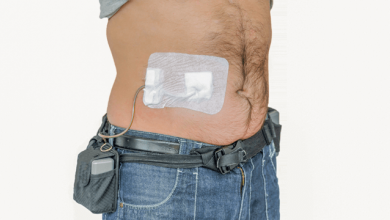Search results
Author(s):
Kiran K Khush
,
Sharon A Hunt
Added:
3 years ago
The field of heart transplantation has evolved tremendously since Alexis Carrel first explanted a canine heart and anastomosed it to the carotid artery and jugular vein of a recipient dog in 1905.1 In 1960, Norman Shumway and Richard Lower at Stanford described a technique for orthotopic canine heart transplantation and demonstrated adequate physiologic function of the denervated heart.2 Their…
View more
Author(s):
Antoni Bayés-Genís
,
Christian Muñoz-Guijosa
,
Evelyn Santiago-Vacas
,
et al
Added:
3 years ago
“The time is always right to do what is right.”
– Martin Luther King Jr (1929–1968)
Heart failure (HF) has increased at a fast pace during the 21st century to become the main cause of morbidity and mortality for patients with cardiovascular disorders in developed nations, leading to increasing healthcare costs and declining quality of life. The expected prevalence of HF was ~25 million in 2011,…
View more
Author(s):
Kensuke Nishimiya
,
Yasuharu Matsumoto
,
Hiroaki Shimokawa
Added:
3 years ago
Vasa Vasorum
The coronary arterial wall generally consists of the tunica intima, tunica media and tunica adventitia. In particular, the coronary adventitia harbours the vasa vasorum (VV),which has a diameter of 50–300 μm and plays an important role as a network of nutrient blood vessels to the arterial wall (Figure 1).1–3
The VV is enhanced in association with arterial wall thickening when the…
View more
Author(s):
Kensuke Nishimiya
,
Jun Takahashi
,
Kazuma Oyama
,
et al
Added:
10 months ago
Cardiac Computed Tomography
Author(s):
Alan S Katz
Added:
3 years ago
Article
Author(s):
Eugenio Picano
Added:
3 years ago
Sources of Radiation Exposure
Radiation used in medical examinations and tests is the largest man-made source of radiation exposure. The biological effects of the radiation dose received is expressed in milliSievert (mSv), with the effective dose of 1 mSv corresponding to the radiation dose of 50 chest X-rays. An average of 2.4 mSv per head per year comes from natural sources (see Figure 1).1…
View more
Author(s):
Gheorghe-Andrei Dan
Added:
2 years ago
Cardiac Amyloid – An Update
Author(s):
Jason N Dungu
Added:
3 years ago
Article
Author(s):
Charlotte Eitel
,
Gerhard Hindricks
,
Christopher Piorkowski
Added:
3 years ago
Cardiac resynchronisation therapy (CRT) is an established therapy for patients with drug-refractory, highly symptomatic systolic heart failure (HF) and delayed ventricular conduction.1 CRT devices are designed to synchronise the mechanical activity within the left ventricle, between the left and the right ventricle and between the atria and ventricles. Resynchronisation induces reverse…
View more
Author(s):
Hugo Saner
Added:
3 years ago
Coronary heart disease (CHD) is the leading cause of death in most countries. It is also a major cause of physical disability, particularly in the rapidly growing population of elderly people. The prevention of subsequent coronary events and the maintenance of physical functioning in such patients are major challenges in preventative care.
Cardiac rehabilitation (CR) programmes were first…
View more












